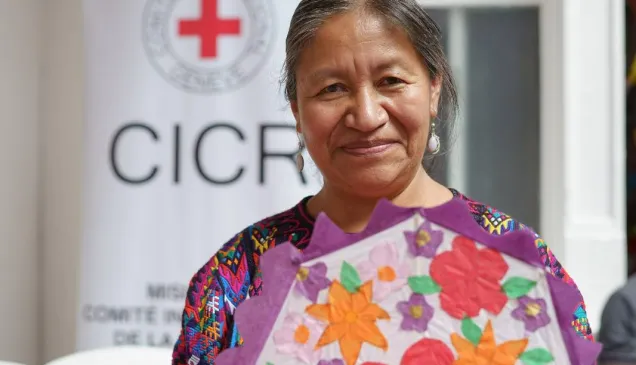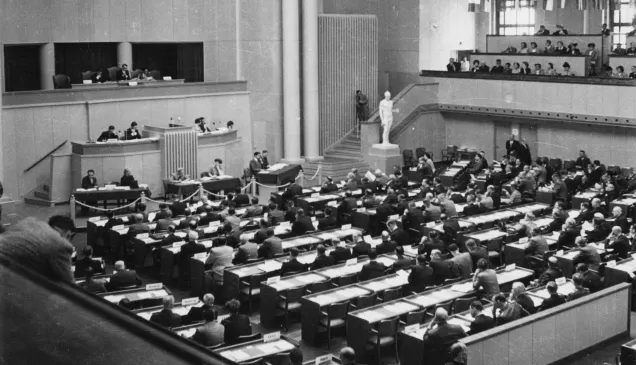Guatemala missing: A decent burial, a final goodbye
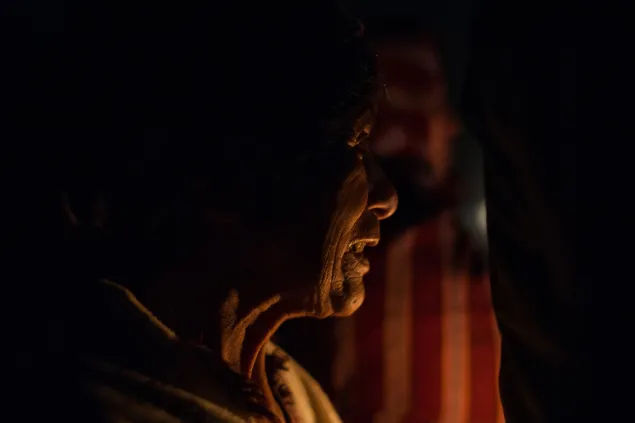
The vehicles that transported the remains arrived in a caravan during the night and were received by people who lighted the way with candles. There is no electricity in Quiquil .
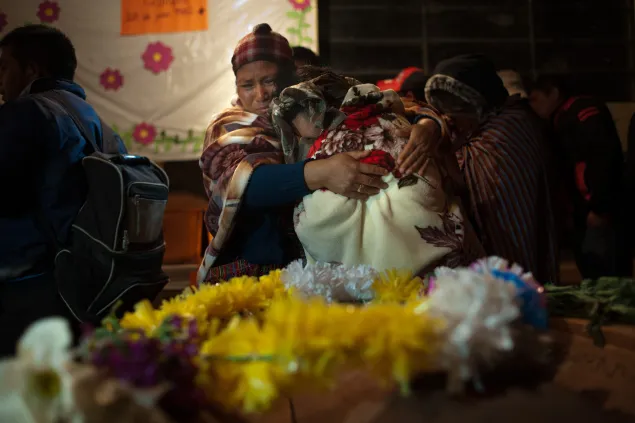
Quiquil, Guatemala
The arrival of the remains is always a difficult moment for the families. The pain for the loss of a beloved one becomes intense, acute, unbearable.
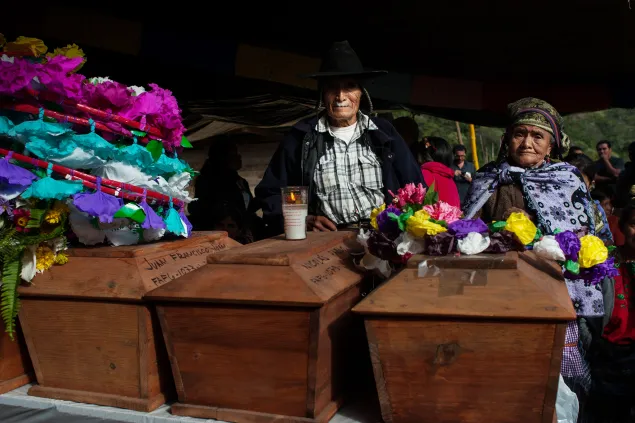
Quiquil, Guatemala
As hours pass, pain is mixed with the relief of being able to have, after so many years, a place to cry over the loss of their loved ones.
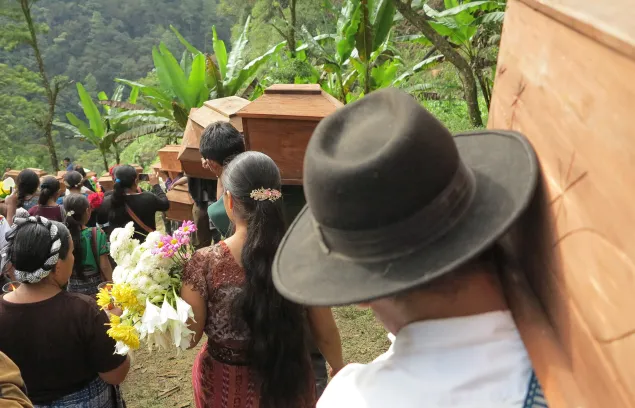
Quiquil, Guatemala
Early in the morning, the remains were carried by family members and other neighbours from the village, all united in a silent procession.
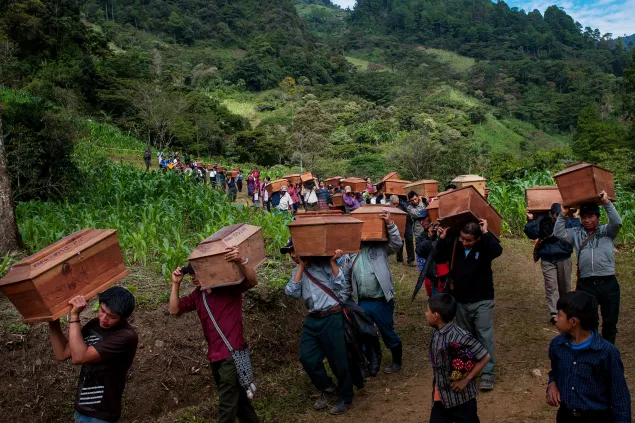
Quiquil, Guatemala
The setting for the burial, located two kilometres away from the village, was chosen by the members of the community themselves. It is the place where, five years before, one of the graves was found, with remains of people killed by soldiers in 1982.
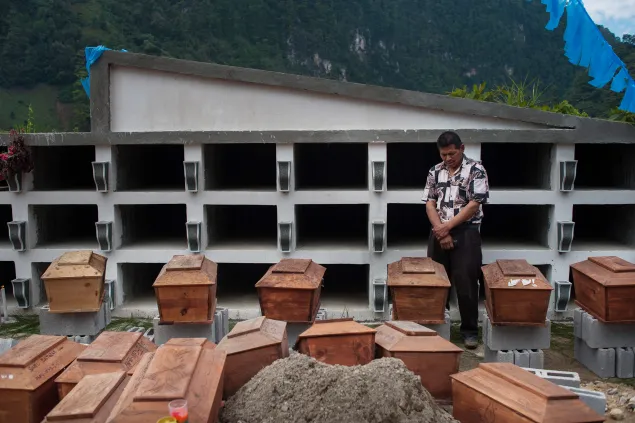
Quiquil, Guatemala
Due to lack of adequate funding from the Programa Nacional de Resarcimiento de Guatemala (Guatemala’s National Programme for Compensation), the ICRC built the niches for the remains of these victims, with the purpose helping to give them a dignified burial.
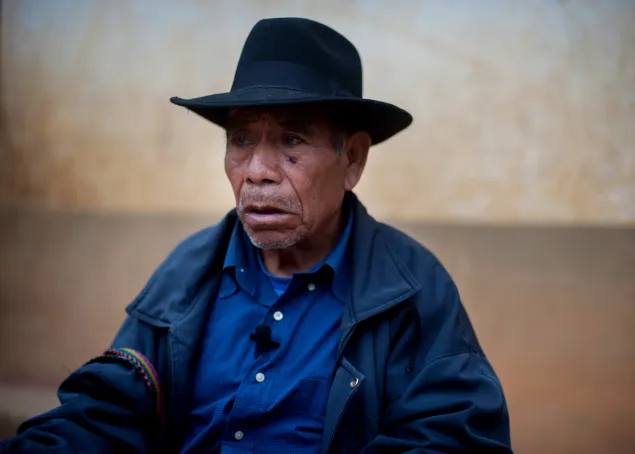
Quiquil, Guatemala
“We are here as an affected part, as they were our relatives who died,” declared Nicolás Domingo, who survived the attack that occurred in 1982 in Quiquil.
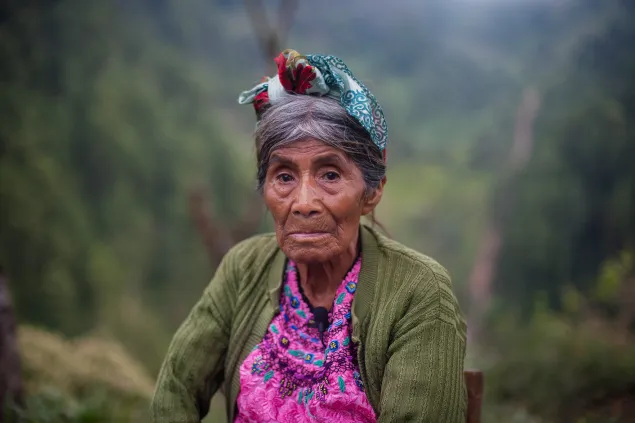
Quiquil, Guatemala
“When my brothers arrive I will be able to cry for them. I am the only one left in my family to do so,” commented Angelina Pedro Nicolás Esteban, shortly before the arrival of the remains.
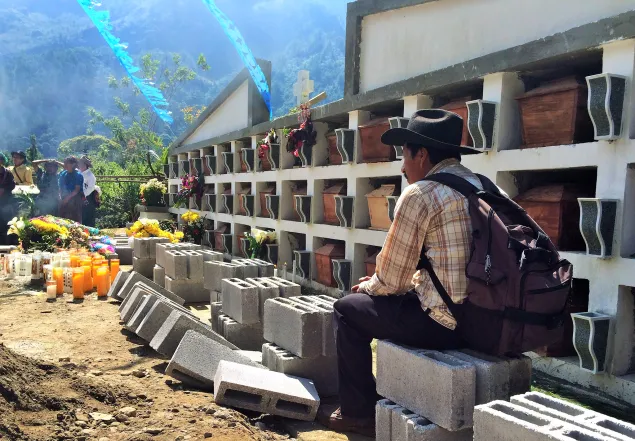
Quiquil, Guatemala
Although the wounds left by the armed conflict are deep, this ceremony has allowed family members to say a final goodbye to their relatives and to try to put an end to the mourning of their deaths.
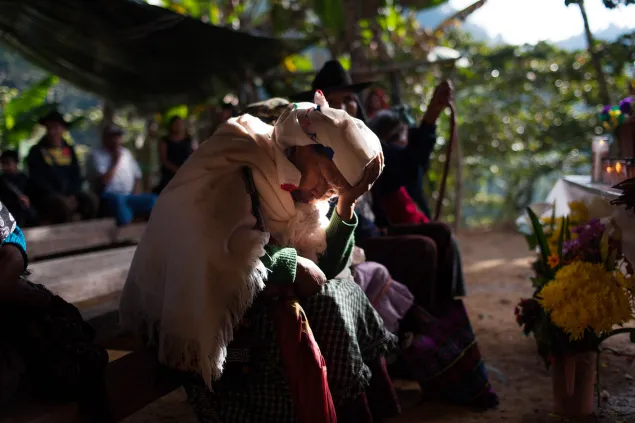
Quiquil, Guatemala
In Guatemala there are still 42,000 people missing whose families have received no answers. This suffering remains over time and scars a society for generations.
The armed conflict in Guatemala (1960-1996) left deep marks on survivors and on the relatives of those who died or went missing. Its effects are still being felt today. Many people were forced to flee to other parts of the country or to seek refuge beyond its borders. Several decades later, some of those who left because of the conflict embarked on a long journey home to honour the memory of their loved ones at a ceremony held in Quiquil on 21 January 2016.
Located in the north of the department of Huehuetenango, Quiquil was heavily affected by more than three decades of armed conflict. Around 80 people died when the village was attacked on 28 June 1982. Some survivors who fled never heard from their relatives again.
In 2009, after finding five mass graves, the Forensic Anthropology Foundation of Guatemala exhumed the remains of 50 people who were murdered on that day and handed them over to the relatives of the victims and the residents of Quiquil. We built the gravesite for the remains of these victims, in order to give them a dignified burial.
For 33 years, the families had mourned the absence of their loved ones, while enduring the pain of not knowing what had happened to them. On 20 January 2016, they were finally able to give them a decent burial.
"Everywhere for everyone." Visit the World Red Cross and Red Crescent Day 2016 website.


